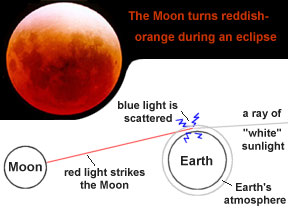Sunlight passing through Earth's atmosphere turns the Moon reddish-orange during a lunar eclipse.
Click on image for full size
Eclipse photo courtesy Andy Steere; diagram courtesy NASA/Tony Phillips.
Lunar Eclipse in October 2004
News story originally written on October 27, 2004
There will be an eclipse of the Moon on Wednesday night, October
27, 2004 (or the morning of the 28th if you are in
Europe or
Africa).
The shadow of the Earth will fall on the Moon, and the Moon will get dark!
The Moonwill not be so dark that you can't see it. The Moon will be dark
orange or red, not black. Some sunlight goes through Earth's atmosphere and
lights the Moon a little bit. Only orange and red light gets through, so the
Moon looks orange or red. The Moon will be orange like a Halloween pumpkin!
The main part of the eclipse is about 80 minutes long. Want to know if you
can see the eclipse where you live? Look at the link
to NASA below to find
out when to look for the eclipse.
You might also be interested in:

How did life evolve on Earth? The answer to this question can help us understand our past and prepare for our future. Although evolution provides credible and reliable answers, polls show that many people turn away from science, seeking other explanations with which they are more comfortable.
...more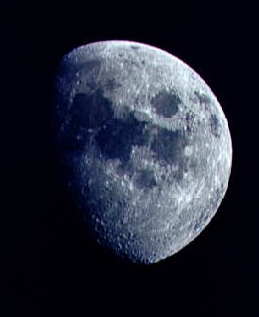
The Earth may only have one Moon, but it's a big one! The Earth's Moon is the fifth largest in the whole solar system. But it is still smaller than the Earth, so objects weigh less on the Moon than they
...more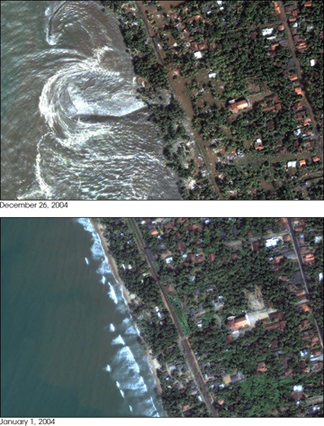
On the morning of December 26th, 2004, an enormous earthquake happened below the Indian Ocean. The earthquake caused the seawater above to be pushed up. This formed huge tsunami waves that spread across
...more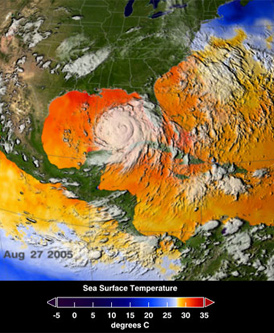
The hurricane season in the North Atlantic is particularly strong this year. And scientists predict that the storms will be getting stronger because of global warming. Follow the links below to find out
...more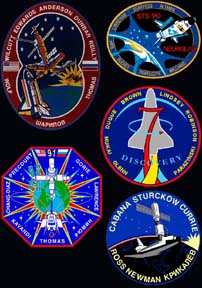
1998 was a very full year when it came to space exploration and history making. In the blast-from-the-past department, John Glenn received another go for a launch aboard Space Shuttle Discovery. After
...more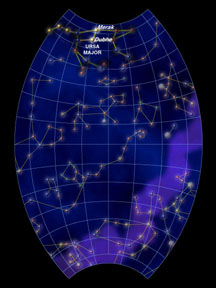
Windows Scientists found twelve new stars! No, not really! But they did create twelve new pages about some of the brightest stars in the night sky. Some of the constellations are Leo, Ursa Major and Virgo.
...more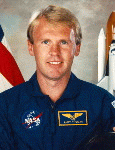
The following is Andy Thomas's last letter to those on Earth. The subject -- a view from space...As I have orbited around the Earth, I have spoken to many amateur radio operators as well as television
...more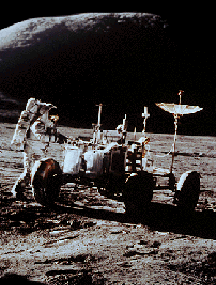
A memorial service in honor of Alan Shepard is scheduled for August 1st in Houston, Texas. Shepard died Tuesday, July 21, at the age of 74. Shepard was the first American to fly in space, and the fifth
...more


